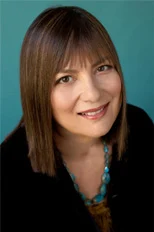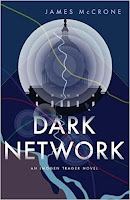“The World That We Knew” by Alice Hoffman – The Path of Most Resistance
Alice Hoffman has quite the unique flair in telling her stories, and The World That We Knew only further affirms this, taking us to an alternate view of Europe in 1941, colored heavily by the author's own brand of magical realism.
The story follows a twelve-year-old girl, Lea, sent away by her mother to hide her from the Nazi regime. With the help of a Rabbi's daughter, Ettie, and a magical golem made specially for Lea, the trio set out on their own unforgettable adventures where evil waits at every corner.
Alice Hoffman Fictionalizes the Great War
We might be getting further and further removed from the Second World War in terms of time, but it definitely hasn't stopped impregnating the imagination of countless artists of all sorts, from painters and moviemakers to authors and playwrights.
It has even come to the point where I have the impression the market of WWII fiction has become fairly saturated with a lot of ideas which are starting to enter the realm of common archetypes and cliches. However, there are still a fair few standouts with their own unique story to tell, and Alice Hoffman's The World That We Knew is part of this exclusive club.
Taking place in 1941, we start our journey in Berlin as we witness Hanni Kohn trying to save her twelve-year-old daughter, Lea, from the terrors of the Nazi regime by sending her somewhere far away. She seeks out the help of a renowned Rabbi to smuggle her daughter out of the country, but their strange salvation comes from an unexpected source: the rabbi's daughter, Ettie. Bestowed with knowledge few have, Ettie creates a magical golem, Ava, sword to protect Lea at all costs.
From there on out, the trio of Lea, Ettie and Ava see their fates intricately intertwined and begin their separate odysseys through a Europe in the throes of a war the likes of which it has never seen, and with some luck will never see again.
Among the many places they travel are the city of Paris where Lea finds her soulmate, a convent with a strange repute for having silver roses, and a relatively small mountaintop village where thousands of Jews had been saved. While Lea is busy with her travels, protected by the faithful Ava, Ettie is in hiding, preparing ceaselessly for the fight ahead, intent on fulfilling her destiny as a warrior.
Mixing Fantasy with Horrific Reality
I'm not sure I'm going to be speaking for every one of my readers here, but I have this impression there are some topics which definitely need to be handled with great care, class and taste when being fictionalized, and World War II is somewhere at the top of the list.
Whenever I do read a work of WWII fiction, I always have some concerns as to how well it's going to be tackled, whether the event will still be given its due importance. After all, I believe it's the kind of period in humanity's history we all owe to ourselves to remember, if only to prevent it from being repeated.
Even though I am familiar with how good of an author Hoffman is (The Museum of Extraordinary Things certainly had its charms), I still couldn't help but have this concern going in, but thankfully my worries were quickly assuaged. While the author does transport us to a different reality where magic is a thing, the horrible deeds done by human beings during the war never fly under the radar.
Hoffman always ensures we remember where we are in terms of history, seldom creating moments of respite where we might feel safe for our protagonists. In other words, Hoffamn doesn't simply use historical events as context for her story, but rather, she gives them the importance it rightfully deserves.
I think the author's brand of mysticism, a type of magic heavily rooted in realism, actually mixes quite well with the chosen historical period (especially considering the history of the Ahnenerbe).
It opens up many curious and unpredictable venues for our characters to travel down, and while it does give them a few advantages, it never gives them absurd powers or invulnerability. Additionally, it also helps to create some much-needed rays of hope during the darker moments of this story, of which there are plenty.
The Spirit of the Resistance
The plot itself, which follows Lea, Ava and Ettie through the years of the Second World War is fairly extensive in its own right, taking us from Berlin to Paris, and subsequently to various other parts of France.
The events develop at a relatively quick pace, but Hoffman does find the time here and there to develop her characters and insert some mystical information to keep the atmosphere alive. We get to see many historical events unfold, but perhaps most importantly, we get to make the acquaintance of a large number of different characters.
I was quite surprised to see the extent to which Hoffman managed to develop all the secondary people, even the ones who weren't necessarily very important to the story. We largely meet them through small vignettes where we learn a bit about their lives, their encounter with Lea and Ava, and in certain cases, how their lives turned out after.
Indeed, many of the characters we meet have their fates open to interpretation, never to be seen again. I quite liked this approach to the side characters as it felt very realistic and in-line with many of the connections people formed with each other during their darkest days.
Additionally, Lea often learns about the fate of these people's relatives through Ava's mystical powers, and takes every opportunity to note the amount of people imprisoned, persecuted and executed by the Nazis.
At its heart, the story is an uplifting one about the resilience of the human spirit, its courage to fight back against even the most overwhelming odds, and perhaps most importantly, the immense bravery people in the real world have shown when saving others.
With this being said, Hoffman's protagonists don't exactly wear “plot armour” as it's commonly referred to, and aren't necessarily due for happily-ever-after endings, making the stake of their journeys much more tangible.
The Final Verdict
The World That We Knew by Alice Hoffman is an exceptional piece of World War II fiction, led by profound and curious characters and taking place in a unique world where magic and reality merge together. A story of hope as well as a stern reminder of what humanity can do to itself, I highly recommend this book to anyone who enjoys character-driven WWII fiction.
 | Alice HoffmanPersonal site Alice Hoffman is a novelist from America whose writings are mostly centered on young adult and children’s fiction. Her stores are known for containing elements of magic and unusual relationships between characters, with her best-known work being the 1996 novel, Practical Magic, also adapted into a film in 1998. |








Comments
Post a Comment